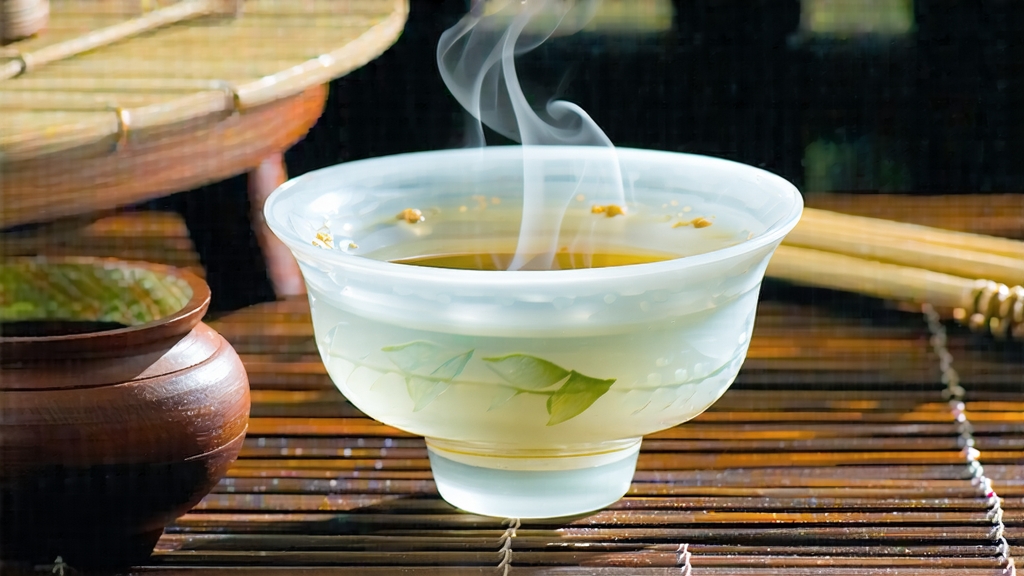
White tea is the most minimally handled of all China’s six major tea families, and within that quiet realm Bai Hao Yin Zhen—“White-Hair Silver Needle”—reigns as the aristocrat. Composed only of unopened buds plucked for a few fleeting mornings each early spring, the tea looks like nothing more dramatic than a pile of pale, downy twigs. Yet when met with hot water these buds release a liquor the color of morning sunshine on old parchment, a fragrance that drifts between fresh melon, pine sap and the faint sweetness of rain-soaked pebbles. To understand Silver Needle is to step into the subtle heart of Chinese tea culture, where restraint is prized above spectacle and time is measured in the slow loss of moisture from a living bud.
History: from imperial tribute to modern connoisseurship
The first written record that can be confidently linked to bud-only white tea appears in the Song dynasty treatise “Da Guan Cha Lun” (1107 CE), where Emperor Huizong praises “white buds of the first flush, needle-straight and silver-furred.” At that stage the buds were probably steamed, pressed and ground like the powdered tea then fashionable. The contemporary technique—sun-withering and low-temperature drying—crystallized in Fujian during the late Ming, when loose-leaf infusion supplanted whipped tea. Fuding county, with its marine climate, acid lateritic soil and cultivars rich in amino acids, became the epicenter. By the Qing, Silver Needle was freighted down to Guangzhou and traded to Southeast Asia as a cooling remedy for merchants laboring in tropical ports. In 1891 the first small batch left Fuding’s Bailin port for Hong Kong and then London, where it was marketed as “Pekoe Tips,” fetching prices above first-flush Darjeeling. Republican-era growers formalized plucking standards—only the fattest, unopened buds taken before Qingming festival—and built the first dedicated withering sheds whose shuttered sides could be angled to catch or deflect sea breezes. After 1949 Silver Needle was reserved for state gifting; Deng Xiaoping famously served it to Henry Kissinger in 1974. Market liberalization in the 1990s opened the gardens to private artisans, and today the tea is both a luxury commodity and a living heritage, its ancient craft protected under China’s GI (Geographical Indication) system.
Cultivars and micro-origins
Although the name “Silver Needle” is sometimes applied to any bud-white tea, Chinese law restricts the GI to two specific cultivars grown within defined townships of Fujian: Fuding Da Bai and Zhenghe Da Bai. Fuding Da Bai, developed from seed selection in the 1850s, produces plumper buds (2.5–3 cm) with a higher bud-to-leaf weight ratio and a signature down that catches light like frost. Zhenghe Da Bai, slightly smaller and more tapered, yields a deeper, maltier liquor favored by northern Chinese markets. Within Fuding itself, the villages of Taimu Shan (altitude 600–800 m) and Guan Yang are most coveted: morning fog rolling off the East China Sea moderates UV exposure, preserving the buds’ glutamic acid, which translates into umami sweetness. Soils weathered from rhyolitic tuff are poor in nitrogen but rich in potassium and trace zinc, elements that tighten cell walls and slow oxidation—nature’s own preservative. Each micro-valley therefore stamps the finished tea with a whisper of locality: Taimu Shan buds lean toward cucumber and water-lily notes, while Guan Yang offers a faint marine iodine reminiscent of distant kelp beds.
Plucking: the silent arithmetic of spring
The picking window opens when the nightly temperature stabilizes above 5 °C and the buds have reached “white jade” stiffness—still pointing skyward, yet yielding to a gentle squeeze. Experienced pickers work from dawn until 10 a.m., before the sun’s angle strengthens transpiration and the bud’s internal moisture drops below 72 %. A single worker gathers roughly 600 g of fresh buds per hour; 25,000 buds (five hours of focused labor) shrink to just 500 g after withering. The pluck is therefore an exercise in human patience: no mechanical shears, no bulk harvesting, only the soft click of fingernail against twig. Buds are laid in shallow bamboo trays no deeper than 3 cm to prevent bruising, then